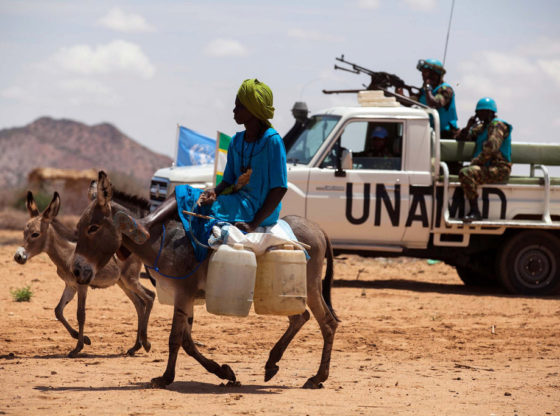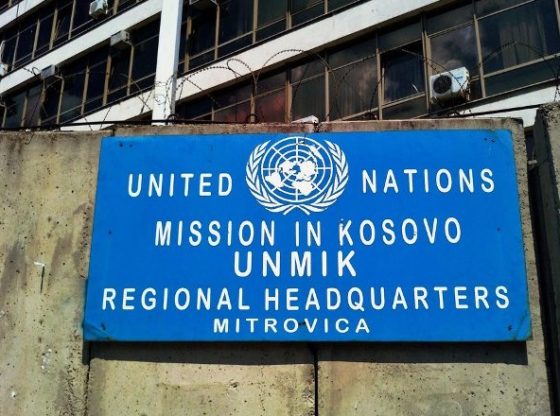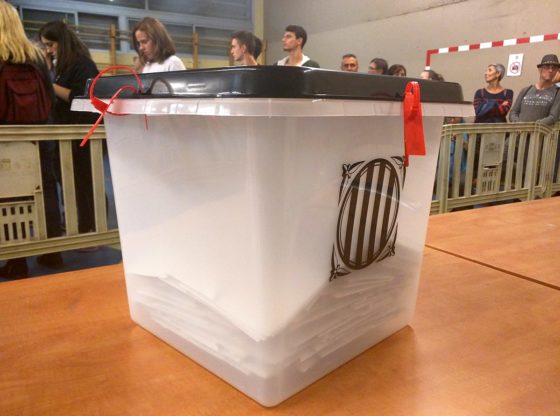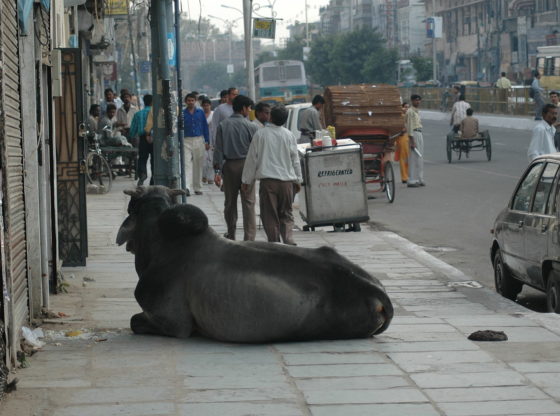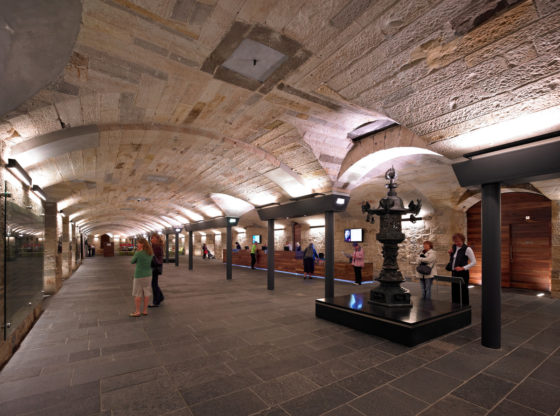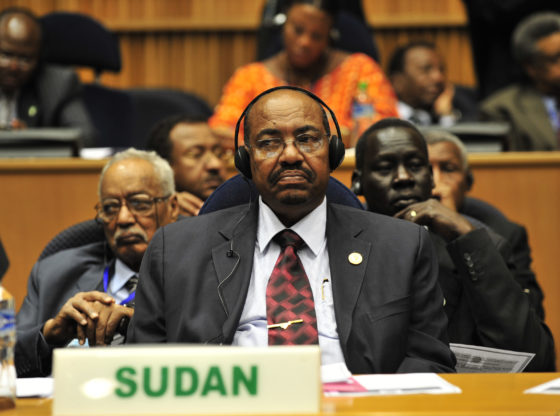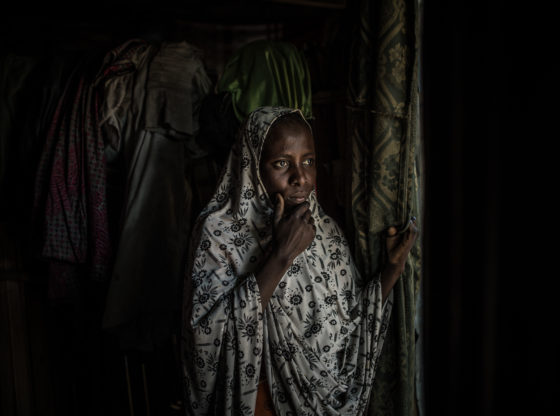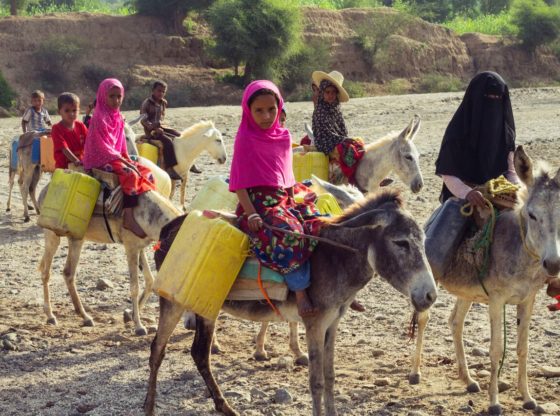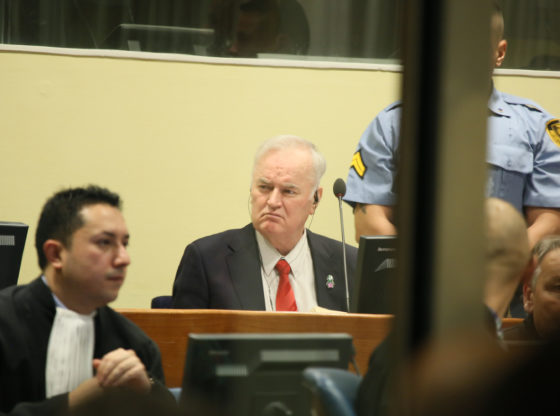Norrie MacQueen’s survey of ongoing UN peace operations moves this month back to the Middle East. Both the UN Disengagement Observer Force on the Israel-Syria border, and the Interim Force in Lebanon, began operations in the 1970s during the years of détente between the Cold War superpowers. Both missions have continued through the enormous changes of the past decades - in the Middle East itself and, more broadly, at the level of global politics. Both, for different reasons, have attracted attention recently as their areas of operation have seen renewed threats of conflict. And both seem condemned to indefinite deployment in the absence of any imminent signs of peace.
How many cold wars were there? You can get a rough sense of a person’s age by how they answer this question. We look back now on the years between the end of the Second World War and the fall of the Berlin Wall as one unbroken era of conflict and tension between East and West. But for those of us looking at our fifties in the rear-view mirror, there have been two cold wars. For us, at least at the time, the 1970s was already the post-Cold War era. That world politics would re-freeze, hard and deep, was a shock waiting for us round the corner in the 1980s. In the meantime, though, the age of superpower détente appeared to have seen off the worst of the old, dangerous bipolar confrontation that defined the Cold War. The superpowers, it seemed, had accepted the logic of mutually assured nuclear destruction. They began to look for ways of avoiding conflict in their own shared self-interest, rather than embracing every opportunity to do each other down. In this setting, UN peacekeeping, which before had been looked on with deep suspicion by the Soviet bloc (and as a useful minor tool of foreign policy by the West), became for a while at least a servant of détente.
The UN’s Disengagement Observer Force (UNDOF) on the Golan Heights and the Interim Force in Lebanon (UNIFIL) mark the extent to which superpower politics can control the peacekeeping project. Both of these peace operations were born amidst – in fact conceived by - détente, in 1974 and 1978 respectively. In a peculiar way, both continue in place today because the unravelling of détente froze them in time. The return to global confrontation stopped the momentum needed for effective peace-making - as opposed to peacekeeping - in each area of operations.
COLD WAR PEACEKEEPING
The 1973 Middle East war between Israel and its neighbours, Egypt and Syria, generated two peace operations on each of the fronts. In the west this was UNEF II, the second United Nations Emergency Force (the first UNEF followed the 1956 Suez crisis and ended on the eve of the Six Day War in 1967). This was, relatively speaking, quite easily arranged. Both Egypt and Israel were persuaded by their respective patrons, the Soviet Union and the United States, to accept UN intervention in the post-conflict disengagement in Sinai. Consequently UN troops were on the ground within weeks of the end of fighting (though, just as in 1956, at Israel’s insistence that ground was on the Egyptian side of the border). This arrangement, and the careful peace-building that went with it over the following years, led in 1979 to the Camp David agreement and a long-term settlement between the two countries.
On the other front, on the Golan Heights on Israel’s north-eastern border with Syria, the process wasn’t so smooth. The deployment of the UN Disengagement Observer Force was finally agreed in May 1974 after a long period of shuttle diplomacy by US secretary of state Henry Kissinger. Reflecting the effect of détente, he was supported by his Soviet counterpart Andrei Gromyko. The Golan Heights probably hasn’t figured too highly in most people’s awareness until recently. For most of the UN force’s forty-three year deployment there, the 1973 ceasefire line has held reasonably well. In the 1974 agreement Israel and Syria accepted an ‘Area of Separation’ between their forces in which only UN military personnel could operate. Beyond this there are ‘Areas of Limitation’ where the two sides’ forces are restricted and monitored by the UN. In other words, UNDOF is classic ‘inter-state interposition’ peacekeeping; a species born in the 1950s but rarely seen after the 1970s.
The name of the operation – the apparently self-contradictory “Observer Force” – reflects the clash between the Syrian and Israeli perspectives. Syria was willing to accept ‘observers’ to keep an eye on the Israeli occupiers of what Damascus regarded as still Syrian sovereign territory. Israel sought a no-nonsense ‘force’ to keep Syria out of the land it had taken as a war gain.
MANAGING THE GOLAN
Underlying the relative success of the UN intervention lies a fraught and delicate history of conflict and contested occupation. The Golan, like the West Bank and Gaza to the south and west, had first been occupied by Israel in the 1967 war. During the 1973 conflict Syria managed to reoccupy the territory but was eventually forced out again. The international status of the occupied Golan is the same as that of the Palestinian territories taken by Israel in the Six Day War. It’s also covered by the landmark Security Council resolution 242 of 1967 which declared the occupations illegal and required Israel to withdraw to its original 1948 borders.
It was this legal status that helped ensure the end of Priti Patel’s place in the UK government’s Cabinet, after her maverick pursuit of a personal foreign policy earlier this year. Her visit to the Golan, courtesy of the Israeli army, cut directly across Britain’s actual foreign policy since 1967 which accepts the UN position that Israel’s presence is illegal.
United Nations Disengagement Observer Force (UNDOF)
First Deployed: June 1974; Total strength (2017): 1126; Contributing states (2017): Bhutan, Czech Republic, Fiji, Finland, India, Ireland, Nepal, Netherlands; Fatalities (since 1974): 48
The situation on the ground in the Golan has been less turbulent over the decades than that in the Palestinian lands. Although Israel has built settlements in the occupied zone in the face of UN condemnation, Arab reaction to this on the ground has been more muted than in the other occupied territories. There have also been sporadic talks between Syria and Israel aimed at achieving a long-term settlement based potentially on the return of territory to Syria which, at a number of points over the years, proved promising if eventually unsuccessful.
The generally uneventful pace of the UN operation changed dramatically with the outbreak of the Syrian civil war in 2011. The Golan became a theatre of fighting between Syrian government forces and various opposition groups at different times. The al-Qaida-affiliated al Nusra Front was particularly active in the region and posed a major threat to the UN mission during 2013 and 2014. Its fighters entered UNDOF’s operational areas and on a number of occasions abducted peacekeeping personnel, mainly from Fiji and the Philippines.
Although these incidents were eventually resolved, the instability – and wild threats to ‘try’ the seized peacekeepers under Sharia law - created a crisis for the mission. Contributing countries began to reconsider their commitments (the Philippine contingent was withdrawn) and for a time the future of the force was in doubt. Typically, the government of Benjamin Netanyahu sought to capitalise on the instability by seeking United States recognition of Israel’s occupation of the Golan as a block to any Islamist advance, though the idea was brushed off by the Obama administration.
By the middle of this year, the Syrian army had more or less re-established itself in the region and the immediate threat to UNDOF lessened. But the longer term prospects for peace-making in the region are even less promising than they had been before the war in Syria. The political process will have to begin from scratch, and without regime change in either Damascus or Tel Aviv, it’s difficult to see an end to the UN presence as it moves through its fifth decade.
LEBANON: ‘THE SWITZERLAND OF THE MIDDLE EAST’
If the problems of Priti Patel brought the Golan Heights back into the spotlight in 2017, the glare has rarely been off Lebanon since the deployment of the UN Interim Force in 1978. With UNIFIL now approaching its fortieth anniversary you might reasonably ask in what sense can it still be considered ‘interim’. But, as with the Golan, recent events have sharpened attention on Lebanon, a country which, incredible as it may now seem, was once thought of as ‘the Switzerland of the Middle East’.
There was a time when that was indeed a fair description of a relaxed and prosperous country (at least in comparison to its neighbours). It emerged at the end of the Second World War from inter-war French control exercised under a League of Nations mandate. Reflecting French influence, its post-independence governments were dominated by Maronite Christian parties and it stood apart from the conflicts raging around it from the 1940s to the 1970s. Although shaken by the winds of Arab nationalism blowing across from its eastern neighbour Syria in the 1950s and 1960s (which in fact in 1958 had brought a small UN peace operation), it had remained relatively stable.
Lebanon emerged from the mid-1970s as the location of choice for the various proxy wars of the Middle East. The latest threat facing the country – and the UN force deployed there – comes from Iran and Saudi Arabia.
Like Switzerland, Lebanon sits at a complex geopolitical nexus. But unlike Switzerland, it’s not protected by a ring of high mountains and the general goodwill of its neighbours. Instead of being left to make itself rich on banking, cheese and cuckoo clocks, Lebanon emerged from the mid-1970s as the location of choice for the various proxy wars of the Middle East. The latest threat facing the country – and the UN force deployed there – comes from Iran and Saudi Arabia which, representing the wider Sunni-Shia split within contemporary Islam, may be set to fight out their differences there.
In 1978 when the UN force was first deployed, it was to confront a different conflict in the Middle East region: that between Israel and the Palestinians. In Lebanon this was slow to develop, though catastrophic when it arrived. In 1970, the Palestine Liberation Organization (PLO) was expelled from Jordan where it was seen as a threat to the generally pro-western government. The favoured destination of the displaced militants was southern Lebanon, hard against Israel’s northern border.
The arrival of the PLO threw a destabilising spanner into the delicate multi-ethnic mechanics of the Lebanese state. In 1975 factional fighting broke out, actively encouraged by outside forces. Then in 1978, in response to cross-border attacks partly provoked by its own policies, Israel launched Operation Litani, an full-scale invasion of Lebanon from the south.
PEACEKEEPING STYMIED
To meet the crisis the UN was able to deploy UNIFIL. But, crucially, it did so without the broad superpower support bestowed on UNDOF in the Golan four years earlier. Détente, which had previously given a fair wind to UN interventions, was by now beginning to unravel. In this climate, the mandate set out by the Security Council for the operation was simply not viable. UNIFIL was supposed to establish international stability while simultaneously restoring the authority of the Lebanese government. To do this, it would have had to reconcile Israel and Syria, Lebanon’s two overbearing neighbours, while inside the country subduing Christian militias, the PLO and more than four dozen free-booting splinter groups. There might just have been a chance of some of this working if the operation could have relied on the superpowers to strong-arm their local clients into cooperation. Without this support from the wings, however, there was little headway to be made.
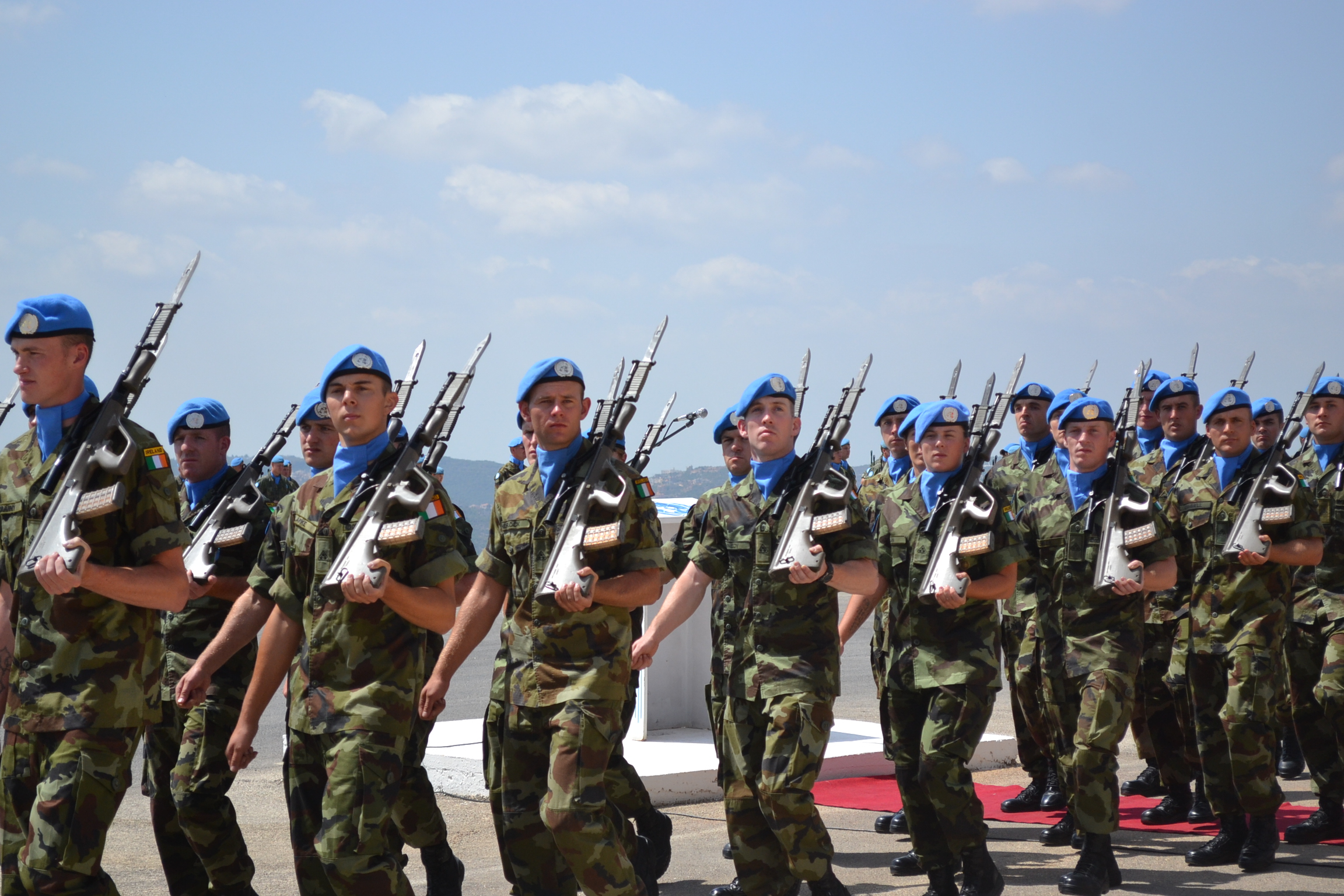
Further major Israeli invasions came in 1982 and again in 2006, each pushing aside the UNIFIL forces supposedly responsible for the security of southern Lebanon. The permanent members of the Security Council - focused once again on Cold War competition or post-Cold War rivalry - did little to support what was, via the Security Council, their own operation. At one point during the 1982 incursion, the French UNIFIL contingent apparently resorted to laying their own national flag across the roads in front of Israeli tanks. This was seen as the only means of slowing the advance of forces which were utterly contemptuous of UN authority and confident of more or less unquestioning support from the United States.
United Nations Interim Force in Lebanon (UNIFIL)
First Deployed: March 1978; Total strength (2017): 11,245; Contributing states (2017): Armenia, Austria, Bangladesh, Belarus, Belgium, Brunei, Cambodia, China, Colombia, Croatia, Cyprus, El Salvador, Estonia, Fiji, Finland, France, Germany, Ghana, Greece, Guatemala, Hungary, India, Indonesia, Ireland, Italy, Kenya, Malaysia, Nepal, Netherlands Qatar, South Korea, Serbia, Sierra Leone, Slovenia, Spain, Sri Lanka, Turkey, Tanzania; Fatalities (since 1978): 312
In many respects UNIFIL, which began as a traditional peacekeeping operation, has evolved into a broader humanitarian intervention. The mission has remained restricted to the south of the country. For better or worse it’s had no role in the repeated crises in the capital, Beirut, over the years of its deployment. Following the Israeli invasion in 1982 and the country-wide crisis it created, UNIFIL could do nothing from its operational area to prevent the awful massacres in the Sabra and Shatila Palestinian refugee camps.
The following year it was American and French ‘peacekeepers’ in Beirut, unconnected with the UN, who bore the brunt of escalating fighting with more than three hundred of them killed in a single attack. The assassination in 2005 of Prime Minister Rafic Hariri, almost certainly by elements acting for Syria, was out-of-area for UNIFIL.
Although the impact of UNIFIL on the underlying conflict dynamics in Lebanon may have been minimal, its humanitarian contribution has been considerable.
The force’s efforts instead were directed more and more to working with aid agencies dealing with some of the catastrophic results of the endless crisis operating south of a ‘Blue Line’ demarking the northern limit of its deployment. As a result, although the impact of UNIFIL on the underlying conflict dynamics in Lebanon may have been minimal, its humanitarian contribution has been considerable. This work hasn’t insulated it from direct violence, however. In 1996, during Israel’s so-called Operation Grapes of Wrath launched in response to cross-border shelling by the Shia Islamist, pro-Iranian Hezbollah movement, a UNIFIL base was targeted by the Israeli air force and about 100 refugees under UN protection were killed.
AN INVIGORATED MANDATE?
UNIFIL’s responsibilities and mandate were reinvigorated in 2006 in an atmosphere of increased tension. Following the abduction of two of its soldiers by Hezbollah, Israel launched a major series of attacks into southern Lebanon, including UNIFIL’s area of operations behind the Blue Line. The United States, at the time under the George W. Bush administration, argued against the strengthening of UNIFIL in the face of the intensifying violence.
Instead, Washington sought to end the UN operation and replace it with another international force, similar to the ill-fated Beirut venture of the early 1980s. But China and Russia, with a view to protecting Syrian interests, saw Security Council control of any force as the best option. UNIFIL was thus strengthened and reconfigured, becoming in the terminology of some ‘UNIFIL II’, to mark it out from the UN operation up to that point.
In reality, the ‘new’ UNIFIL hasn’t been different to the force’s original incarnation in any dramatic way. The most visible change is a stronger European presence with some fifteen members of the EU contributing personnel. This runs against the broad trend in UN peacekeeping in recent years towards ever-greater dominance by contingents from the global South. But perhaps more importantly, it puts the personnel of big actors in the international system like France, Germany, and Italy into the front line. Potentially, at least, this could alter the diplomatic dynamics of the conflict.
This would assuredly be a major advance. The problem for the UN peace operation in Lebanon (and for those we’ve looked at already in this series - on Israel’s borders and in Kashmir and in Cyprus) is the failure of effective peace-making processes to match the peacekeeping efforts on the ground. As Lebanon’s role as a favourite proxy battlefield for competing forces in the Middle East emerges again in 2017, closing this gap between the UN’s boots on the ground and the chairs round the negotiating table is more urgent than ever.
Norrie MacQueen is is the author of several books on the United Nations, peace operations and humanitarian intervention. He is co-editor of the Oxford Handbook of United Nations Peacekeeping Operations which has recently appeared in paperback, and he is on the editorial board of the Journal of International Peacekeeping. He was part of the Democratic Governance Support Unit of the UN integrated peacekeeping mission in Timor-Leste during 2012 in the final phase of the operation. Norrie is a Contributing Editor at CABLE. He is on Twitter at: @NorrieMacQueen Mail him at: [email protected]
Feature image: Dutch UNFIL base, Lebanon, 1981. Image: Marco K [CC BY-SA 2.0]

